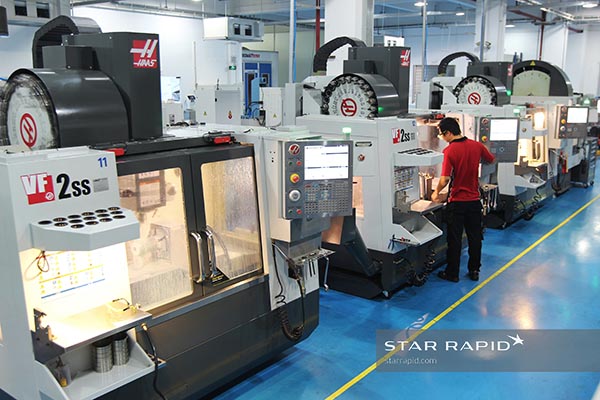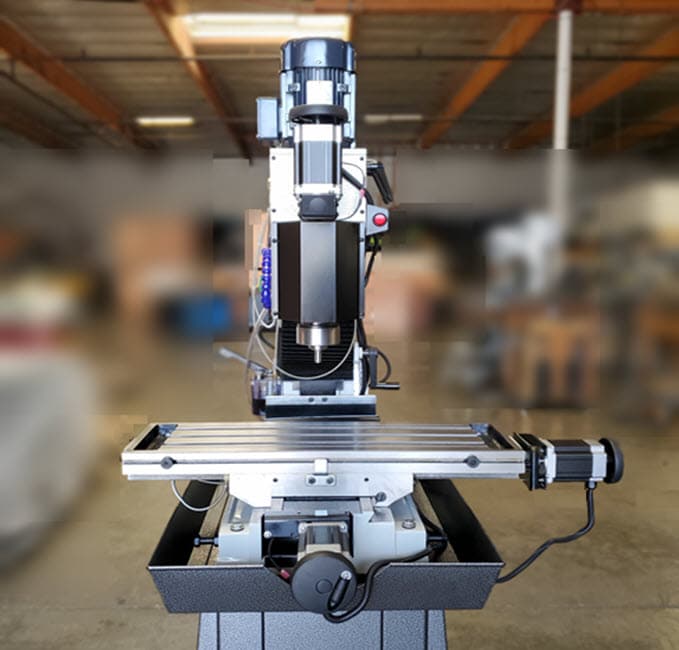Table of Contents
CNC milling is a popular manufacturing process used to create precise parts and components for a variety of industries. One of the most important factors in achieving accurate and efficient CNC milling is calculating the proper feed rate. In this article, we will explore the basics of feed rate calculation and provide tips for optimizing your CNC milling process. Whether you are a seasoned machinist or just getting started in the field, understanding feed rate calculation is crucial to achieving optimal results. So, let’s dive in and explore the world of CNC milling feed rate calculation!
- Determine the spindle speed in RPM (revolutions per minute) of the milling machine.
- Choose the feed rate in inches per minute (IPM) or millimeters per minute (MMPM) depending on the unit of measurement used.
- Multiply the spindle speed (in RPM) by the number of cutting teeth on the milling cutter to obtain the Cutting Speed (CS) in feet per minute (FPM).
- Calculate the Feed Rate (FR) using the formula: FR = CS x number of flutes x chip load per tooth.
- Adjust the feed rate according to the material being cut, the cutter diameter, and the cutter type.
How to Calculate Feed Rate for CNC Milling?
CNC milling is a process that involves using a milling machine to remove material from a workpiece. One of the critical factors in successful CNC milling is determining the appropriate feed rate. The feed rate is the rate at which the cutting tool moves along the workpiece, and it is essential to get this right to achieve the desired result. In this article, we will explore how to calculate feed rate for CNC milling and discuss some of the factors that can affect it.
What is Feed Rate?
Feed rate refers to the speed at which the cutting tool moves along the workpiece during the milling process. It is typically measured in inches per minute (IPM) or millimeters per minute (mm/min). The feed rate determines how quickly material is removed from the workpiece, and it is a crucial factor in achieving the desired surface finish, tool life, and overall productivity.
To calculate the feed rate, you need to know the spindle speed, the number of cutting teeth on the tool, and the chip load per tooth. The chip load is the thickness of the material being removed by each cutting edge of the tool per revolution. Once you have these values, you can use a simple formula to calculate the feed rate.
Formula for Calculating Feed Rate
The formula for calculating feed rate is:
Feed Rate = (Spindle Speed x Number of Cutting Teeth x Chip Load) / Conversion Factor
The conversion factor is used to convert the units of measurement from revolutions per minute (RPM) to inches per minute (IPM) or millimeters per minute (mm/min). The value of the conversion factor depends on the units of measurement used for spindle speed and chip load.
Factors Affecting Feed Rate
Several factors can affect the feed rate, including the material being machined, the type of cutting tool used, the depth of cut, and the rigidity of the machine setup. The material being machined can affect the feed rate because different materials have different properties, such as hardness and toughness, that can affect how easily they can be machined.
The type of cutting tool used can also affect the feed rate. For example, a tool with fewer cutting teeth may require a slower feed rate than a tool with more cutting teeth to achieve the same surface finish. The depth of cut can affect the feed rate because a deeper cut may require a slower feed rate to prevent the tool from breaking. Finally, the rigidity of the machine setup can affect the feed rate because a less rigid setup may require a slower feed rate to prevent chatter and vibration.
Benefits of Calculating Feed Rate
Calculating the feed rate is essential for achieving the desired surface finish, tool life, and productivity in CNC milling. If the feed rate is too slow, it can result in a poor surface finish and reduced productivity. If the feed rate is too fast, it can cause excessive tool wear and breakage, leading to increased downtime and costs.
By calculating the feed rate correctly, you can optimize the milling process to achieve the best possible results. You can also reduce tool wear and breakage, increase productivity, and reduce downtime, resulting in significant cost savings over time.
Feed Rate vs. Speeds and Feeds
Feed rate is just one of the parameters that make up the speeds and feeds for CNC milling. The speeds and feeds include spindle speed, feed rate, depth of cut, and cutting speed, and they all work together to determine the optimal machining conditions for a given material and cutting tool.
The cutting speed is the speed at which the cutting tool moves through the material being machined. It is typically measured in surface feet per minute (SFM) or meters per minute (m/min). The cutting speed, along with the chip load per tooth, is used to calculate the spindle speed required for a given feed rate and depth of cut.
In conclusion, calculating the feed rate is crucial for achieving the desired surface finish, tool life, and productivity in CNC milling. By understanding the factors that affect feed rate and using the appropriate formula to calculate it, you can optimize the milling process and achieve the best possible results.
Frequently Asked Questions
Here are some of the most commonly asked questions regarding how to calculate feed rate for CNC milling.
What is Feed Rate in CNC Milling?
Feed rate refers to the speed at which a cutting tool moves through the material being machined in a CNC milling operation. It is usually measured in units of distance per time, such as inches per minute or millimeters per second. The feed rate is a critical parameter that affects both the quality of the machined part and the time required to complete the job.
The optimal feed rate depends on a variety of factors, including the material being machined, the type of cutting tool and its geometry, the depth of cut, and the desired surface finish. A feed rate that is too slow may result in poor surface finish, excessive tool wear, and longer machining times, while a feed rate that is too fast may cause tool breakage, poor accuracy, and damage to the machine.
How is Feed Rate Calculated in CNC Milling?
The formula for calculating the feed rate in CNC milling is based on the following parameters:
Feed Rate = (Number of Teeth on Cutter x RPM x Chip Load) / (inches per minute)
The number of teeth on the cutter refers to the number of cutting edges on the tool. The RPM is the spindle speed of the machine, and the chip load is the thickness of the material being removed by each cutting edge of the tool. The inches per minute (IPM) is the desired speed of the cutting tool through the material being machined.
Once these parameters are known, the feed rate can be calculated using the formula. However, it is important to note that the optimal feed rate may vary depending on the specific machining operation and the material being machined.
What is Chip Load in CNC Milling?
Chip load, also known as feed per tooth, is the thickness of material being removed by each cutting edge of the tool in a single revolution. It is usually measured in thousandths of an inch or millimeters per tooth. The chip load is a critical parameter that affects the quality of the machined surface, tool life, and machining time.
The optimal chip load depends on a variety of factors, including the material being machined, the type of cutting tool and its geometry, the depth of cut, and the desired surface finish. A chip load that is too low may result in poor surface finish, excessive tool wear, and longer machining times, while a chip load that is too high may cause tool breakage, poor accuracy, and damage to the machine.
What is Spindle Speed in CNC Milling?
Spindle speed refers to the rotational speed of the spindle of the machine in RPM (revolutions per minute). It is a critical parameter that affects the quality of the machined surface, tool life, and machining time. The optimal spindle speed depends on a variety of factors, including the material being machined, the type of cutting tool and its geometry, the depth of cut, and the desired surface finish.
The spindle speed is usually set based on the manufacturer’s recommendations or the operator’s experience. However, it is important to note that the optimal spindle speed may vary depending on the specific machining operation and the material being machined.
What is Depth of Cut in CNC Milling?
Depth of cut refers to the distance that the cutting tool penetrates into the material being machined in a single pass. It is a critical parameter that affects the quality of the machined surface, tool life, and machining time. The optimal depth of cut depends on a variety of factors, including the material being machined, the type of cutting tool and its geometry, the spindle speed, and the desired surface finish.
The depth of cut is usually set based on the manufacturer’s recommendations or the operator’s experience. However, it is important to note that the optimal depth of cut may vary depending on the specific machining operation and the material being machined.
In conclusion, understanding how to calculate feed rate for CNC milling is crucial for achieving optimal machining performance. By considering factors such as material type, cutting speed, and tool diameter, operators can determine the appropriate feed rate for their specific milling application.
Implementing the correct feed rate can help to prevent tool wear, reduce machining time, and produce high-quality parts. In addition, regularly monitoring and adjusting the feed rate throughout the milling process can lead to even greater efficiency and accuracy.
Overall, taking the time to master feed rate calculations can greatly benefit CNC milling operations, resulting in improved productivity and profitability. So what are you waiting for? Start applying these principles to your own machining processes today and see the difference it can make.
Request a quote today!
[contact-form-7 id="1578" title="Contact form"]
Please compress the file into a ZIP or RAR file before uploading. Alternatively, send through your RFQ by email.
enquires@unitymanufacture.com





